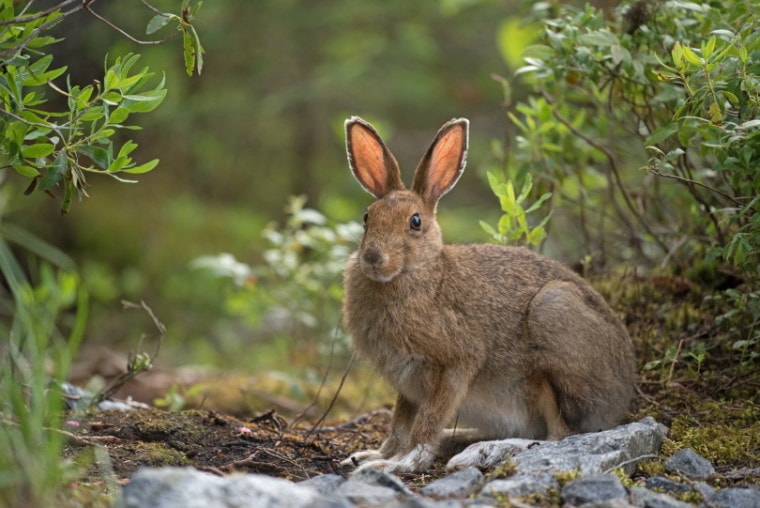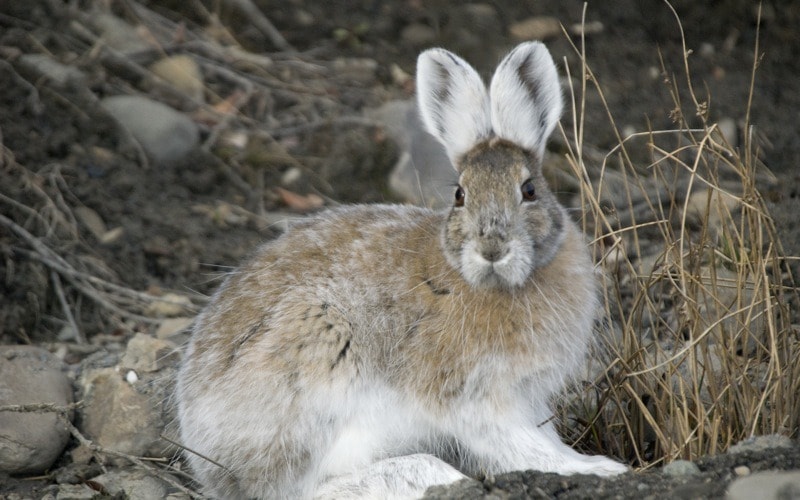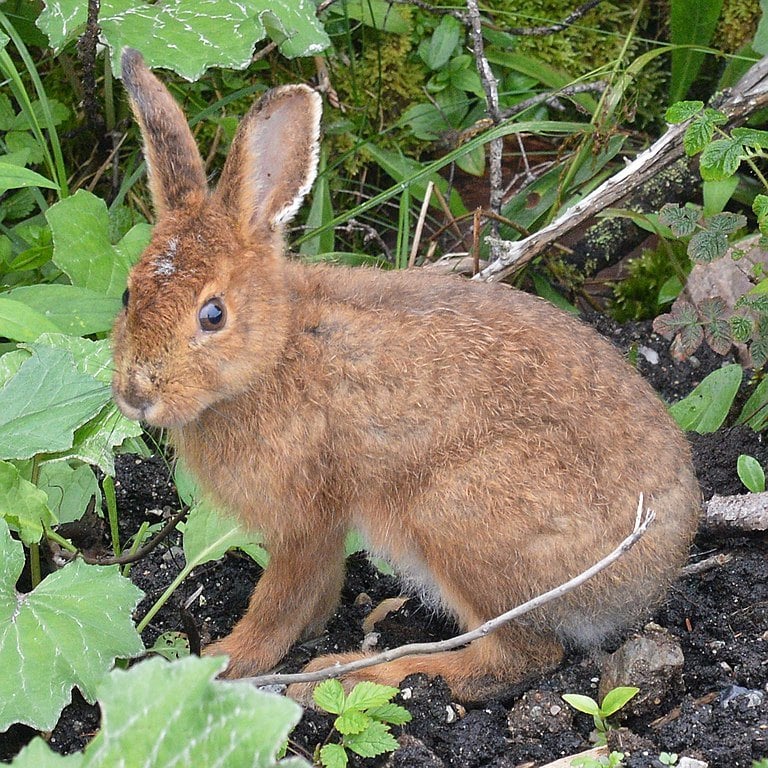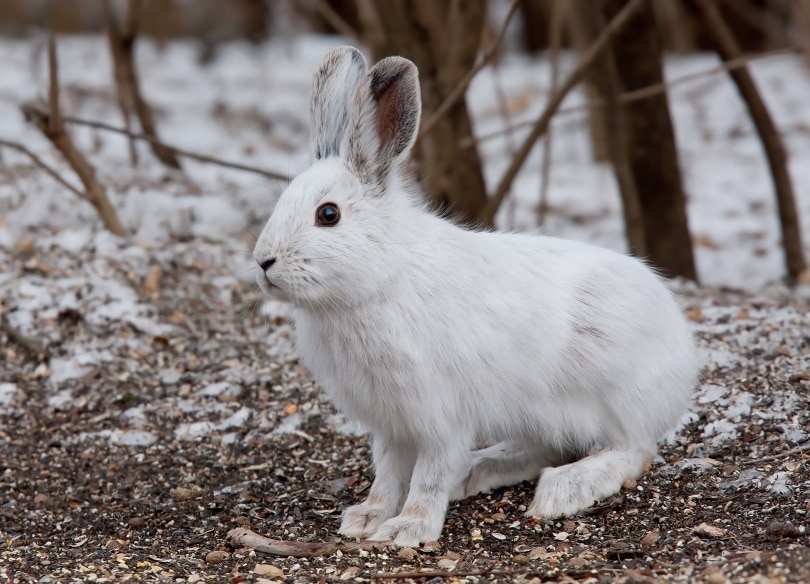How to Draw a Snowshoe Hare
Pet Keen is reader-supported. When you buy via links on our site, we may earn an affiliate commission at no cost to you. Learn more.

The Snowshoe hare is sometimes called a varying hare or a Snowshoe rabbit. You'll find these hares in North America, and it gets its name from the large paws on its back feet that resemble snowshoes. These paws will help it stay on top of the snow during the winter months, and it also changes the color of its fur from brown to white to help it camouflage itself better.
Keep reading while we take a close look at this fascinating animal to learn more about it to see if it's something you might want to keep as a pet.

Quick Facts about the Snowshoe Hare
| Species Name: | L. americanus |
| Family: | Leporidae |
| Care Level: | High |
| Region: | North America |
| Temperament: | Wild |
| Color Form: | Brown/grey in summer, white in winter |
| Lifespan: | 5 years |
| Size: | 20-inches long, weighs 3 – 4 pounds |
| Diet: | Plant, grass, leaves, ferns |
| Habitat size: | 20 acres |
| Compatibility: | Not an indoor pet |
Snowshoe Hare Overview

The Snowshoe Hare is native to many parts of North America. You can find it as far north as Alaska and as far south as New Mexico. You'll find them in the Appalachian Mountains as well as the Rockies. Many people call them rabbits, and though they look similar, they are very different in many ways. The large back paws of the Snowshoe Hare help it move through snow more easily, and it can reach speeds up to 40 miles per hour (MPH).
The Snowshoe Hare will also change its fur from brown and grey in the summer months to white in the winter, while a rabbit will stay the same color. Recently there has been some discussion about the impact of climate change on the Snowshoe Hare as snowfall arriving later in the year leaves the white hare exposed to predators in the fall months.
How Much Does a Snowshoe Hare Cost?
Unfortunately, Snowshoe Hares are not typically sold or bred as pets. It's a wild animal whose needs are not able to be satisfied in an artificial environment. It's better to purchase one of the many varieties of rabbits that are much better suited for life in the home and enjoy being around people.
Typical Behavior & Temperament
Snowshoe Hares are crepuscular, which means they are most active at dusk and dawn. They have fewer rods in their eyes than we do, so they struggle to see in bright light, but they can still see rather well in darkness though not as well as a cat. While a Snowshoe Hare can see almost 360 degrees around, most of this vision is in mono, so it's challenging to determine depth. It will attempt to determine how far away something is by moving its head up and down and side to side to see how fast the object moves against its surroundings. Closer things will move more quickly, while objects in the distance will barely move at all.

Appearance & Varieties
The Snowshoe Hare has a rusty brown appearance in the summer, and its fur may contain patches of white, especially on the belly. In winter, it becomes all white, and the color-changing process takes between 60 and ninety days. Its large back paws help it stay on top of the snow, and they are covered in a thick fur on the soles of its feet to protect it from cold temperatures. It does not hibernate and must feed all winter.
Snowshoe Hares weigh about four pounds and can reach 20 inches in length. It will have long ears that are about 2.5 inches and a small 1.5-inch tail.

How to Take Care of a Snowshoe Hare
The Snowshoe Hare requires a habitat of many acres. It usually is most active within five to ten acres of their home but will frequent an area as large as 25 acres. You can usually find them around coniferous forests, which helps conceal them and provides protection. Areas with plenty of Aspen, Spruce, and Cedar trees also make great habitats for these animals.
Snowshoe Hares require base and travel cover of 16-foot-tall trees, along with a generous amount of smaller younger trees to provide food and future shelter. It will also need plenty of permanent herbaceous vegetation to feed on with protection from predators.

Do Snowshoe Hares Get Along with Other Pets?
Many pet dogs will chase a Snowshoe Hare if allowed to go outside, though few have success at catching them. If one passes through your yard at night, it can also cause your dog to start barking, waking you up. Cats will also chase them, but cats will struggle more to catch and take down a Snowshoe Hare due to their large size and fast speed.
What to Feed Your Snowshoe Hare

Snowshoe Hares are herbivores with a diverse diet consisting of herbs, grass, ferns, berries, and softwoods from new growth during the summer months. In the winter, they rely on twigs, buds, and even bark to get the nutrition that they need.
Keeping Your Snowshoe Hare Healthy
If you want to invite Snowshoe Hare to your yard, you will need to add as many coniferous trees as possible to your yard to provide them with someplace to hide for protection. You will also need to adds much dense vegetation as you can to provide food. If you live in a rural area, tall grass makes great dense vegetation, but you will need to make it look nice with several different low-lying plants planted close together in the city.
Breeding
The Snowshoe Hare has fully developed babies. They are born above ground, covered with fur, and have open eyes. It can hop immediately and will begin foraging for food in 10 days. The mother will start breeding again within a few hours of giving birth, with another litter coming as soon as five weeks. Each litter will have between one and nine baby hares.
In contrast, rabbits are born below ground and are blind and naked for the first several days.
Are Snowshoe Hares Suitable for You?
Unfortunately, the Snowshoe Hare does not make a suitable house pet due to the huge habitat that they require. You can do several things to encourage one to visit your yard, though, and we recommend planting some dense vegetation around your home as the best way to see one. However, not everyone will be happy with their arrival because they can eat and destroy a garden quite quickly.
We hope you have enjoyed reading over our in-depth look at this often-seen animal and learned something new. If you think it can help others, please share this guide to the Snowshoe Hare on Facebook and Twitter.
Featured Image Credit: RRichard29, Shutterstock
Source: https://petkeen.com/snowshoe-hare/
0 Response to "How to Draw a Snowshoe Hare"
Post a Comment